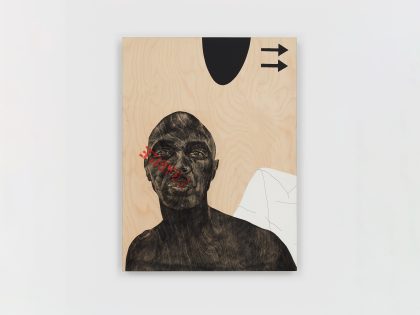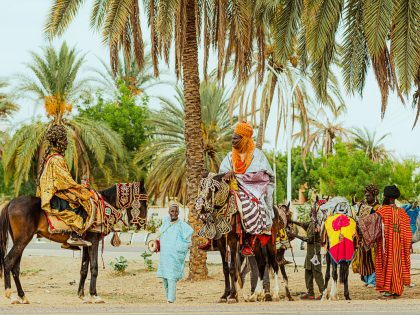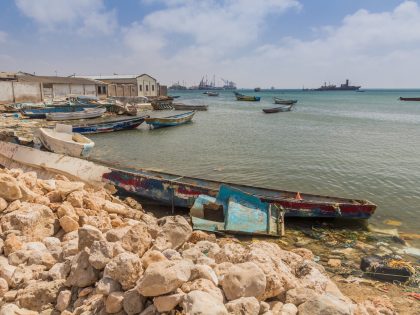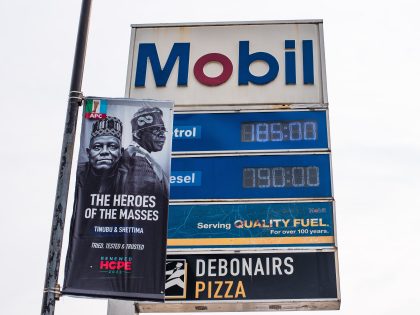The “many mistakes” of the white Afrikaner past
Public history about Afrikaners in South Africa is disingenous and predictabiy don't want to deal with history.

On a recent trip to South Africa, I managed to fit in a visit to the Voortrekker Monument, the enormous mausoleum on a hilltop just outside the capital Pretoria. The monument, which celebrates Afrikaner nationalism, was begun in 1938 on the centenary of the Great Trek, and inaugurated by the recently installed National Party eleven years later on December 16, 1949 (the anniversary of the Boers’ triumph over the Zulu at Blood River). During my visit, I was not surprised by the old-fashioned nature of the small museum in the monument’s basement. For example, the text describing the Great Trek observes that the Boers who decamped from the British cape Colony in the 1830s were accompanied by their “black and coloured employees.” The truth, of course, is that many of these “employees” were slaves or near-slaves, and one of the central grievances Boers had as British subjects was the abolition of slavery.
As it turns out, the remnants of the Afrikaner cultural and political establishment no longer advance such a crude display of heritage. The Voortrekker Monument remains a hulking, if potent, reminder of a discredited past, and might even be considered kitsch at this point. But also astride that hilltop, and only a few hundred meters away from the old monument, one finds a spanking brand new “heritage center.” Inside, in addition to an archive and a small Afrikaans language bookshop, is a superb exhibit tracing the Afrikaner experience in the twentieth century.
I say “superb” in the sense that the exhibit—grandly entitled “Afrikaners in the 20th Century: Pioneers. Beacons & Bridges”—brings the highest degree of professionalism to its narrative structure. Text is boldly presented, easily readable (in English and Afrikaans), and well-organized. The stunning visual imagery mixes photography, cartoons, graphic art, and historical facsimiles, enhancing the text and telling a story on its own. The exhibit winds around a well-laid-out space, clearly organized into sections on politics, culture, economics, warfare, social history, sports, etc. Each section (or “theme”) is self-contained and yet offers a coherent narrative flow, aided by numerous comprehensive timelines interspersed throughout. Finally, while the exhibit tells the story of a “people” in historical detail, with great sympathy and pride, and with a clear sense of evolution over time, it does so without reductionism—including, at least in the timelines, Afrikaner dissidents like Communist Bram Fischer and cleric Beyers Naude (both heroes in the ANC pantheon).
Nevertheless, the degree to which this “heritage center” rejects the current “liberation narrative” in South Africa and resurrects some of the most shopworn historical justifications for white supremacy left me stupefied. The extremely high quality of the exhibit disguises a nasty and treacherous undercurrent of unreconciled Afrikaner nationalism quite of a piece with the nearby Monument.
The first parts of the exhibit, beginning with a prelude to the twentieth century experience entitled “From European to Africander” lull one into complacency, for they seem accurate and even-handed enough. Unlike the museum inside the Monument itself, here the fact that the Boers left the British Empire for the African interior in the Great Trek of the 1830s as a reaction to slave emancipation is acknowledged. So too is the large numbers of Africans interned in concentration camps by the British during the Anglo-Boer War, a subject often neglected in accounts of the Afrikaner past. The narrative even refers to the birth of the ANC, noting that after Union in 1910 “African nationalism began to grow amongst literate black people” who were “increasingly critical of laws such as the Natives’ Land Act of 1913” (although the text fails to explain why, and does not link this act of land dispossession to the later Homelands policy of the apartheid state). Not surprisingly, however, apartheid is blamed on the British colonial legacy (with some justice, one must admit). After all, they were the ones who first recognized that “assimilation of the black majority was problematic because of the growing numbers of the black population and differences in civilization levels.” Characteristically, such colonial attitudes seem to be faulted and yet still go unchallenged by the “republican” tradition of the Boers and, later, Afrikaners.
With the rise and triumph of Afrikaner nationalism after the 1930s, however, the exhibit becomes a bit unhinged. The fascist Afrikaner organization, the Ossewa Brandwag, is merely described as a “cultural organization” and dismissed as an “embarrassment” to many Afrikaners, without mention of the organization’s ardent pro-Nazi sympathies. In the section on rural Afrikaners’ legendary attachment to the “soil, his pride and his anchor”, the exhibit text resorts to time-honored paternalism: “the Afrikaans farmer…was ever ready to assist other cultural groups—chiefly labourers.” And in an extraordinarily unreconstructed turn of phrase, Apartheid is described merely as “the consequence of the Afrikaner’s political struggle to retain his independence.” Vis-à-vis English speakers? African nationalists? A hostile international community? The Red menace? All of the above? Not entirely clear.
Well, OK, maybe it was the Red Menace: by the time we get to the 1960s, the devilish role of Communism as the main enemy of white minority rule begins to loom ever larger in the exhibit’s text. “After becoming a Republic in 1961,” we are dutifully informed, “the onslaught against South Africa intensified from all sides” and “the ANC’s policy of urban and rural terror led to hundreds of casualties amongst innocent civilians.” No mention is made here of the ANC’s explicit policy of sabotage rather than the targeting of civilians, nor its decades of deliberate restraint in the face of torture, assassinations, infiltration, indefinite detention, bannings, and the rest. No hint of the South African police state breaks the complacent vision of a fair-minded white, Christian democracy under assault by terroristic communists and their international allies, especially the USSR; no reference to the ninety-day detention act, nor the hundreds of deaths in detention, need trouble the viewer in the face of the imminent Communist threat. After all, we are reminded, “almost the whole of the Executive Committee of the ANC were also members of the SACP.” Meanwhile, B.J. Vorster, the goodhearted and open-minded Prime Minister who succeeded H.F. Verwoerd in 1966, reached out to the rest of Africa, promoted the independence and development of the Homelands, and even legalized African trade unions!
It is true that the exhibit devotes a few panels to the Defiance Campaign and other non-violent ANC mobilizations of the 1950s. But, since no mention is made of the Sharpeville massacre (described, rather, as a “riot”), the visitor can only conclude that the ANC eventually resorted to armed struggle—excuse me, terrorism—at the behest of Soviet efforts to destabilize southern Africa. When it comes to the actions of Umkhonto we Sizwe (the military wing of the ANC, though the exhibit does not bother with this distinction), much is made of the infamous “Church Street bombing” in Pretoria in 1983, which killed a dozen civilians (even though it targeted a military installation). In the text appended to the enormous, blow-up picture of this act of violence comes the reminder that “in the following year 193 acts of urban terror were committed.”
The final section of the political narrative gives undue credit to the “radical reforms” instituted by the National Party in the 1980s as instrumental to forging a peaceful transition to democratic rule, and at the same time complains of “new national symbols, affirmative action, place name changes and practical disregard for Afrikaans.” Indeed, the largely upbeat narrative of Afrikaner nationhood, achievement, and consolidation in economics, politics, culture, national defense, and even armament production concludes with a distinct downer, noting that in post-apartheid South Africa, “Afrikaners found themselves increasingly marginalized.” The more things change, the more they stay the same, I guess.
On my way out, I noticed a panel at the entrance to the exhibit that I had missed before. There, the museum-goer is invited to experience an honest assessment of the Afrikaner past. Yes, the curators admit, “many mistakes were made.” My only question after seeing the exhibit was: what were they?



















